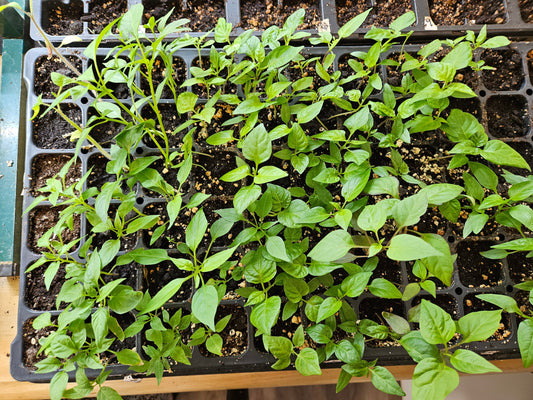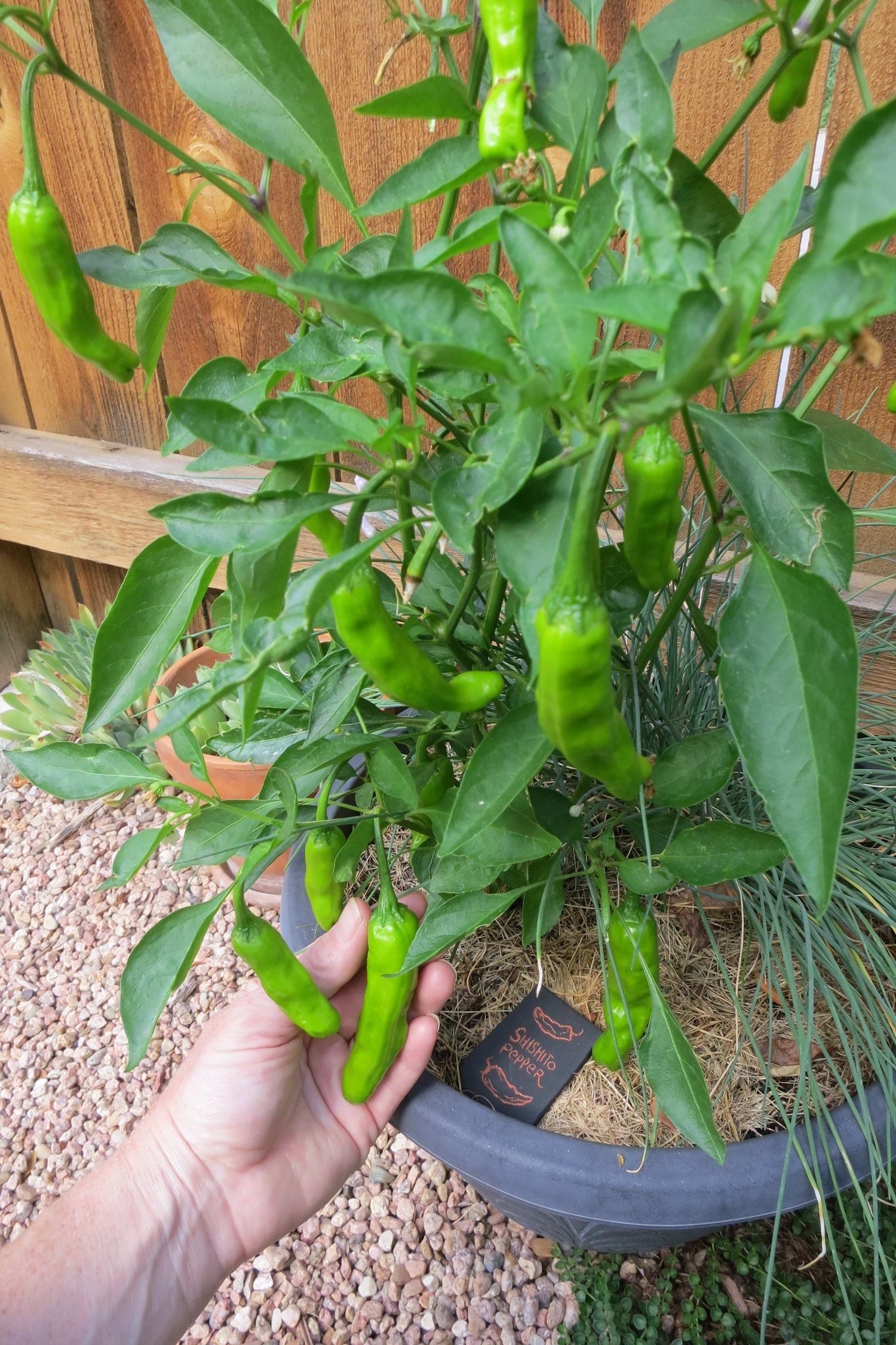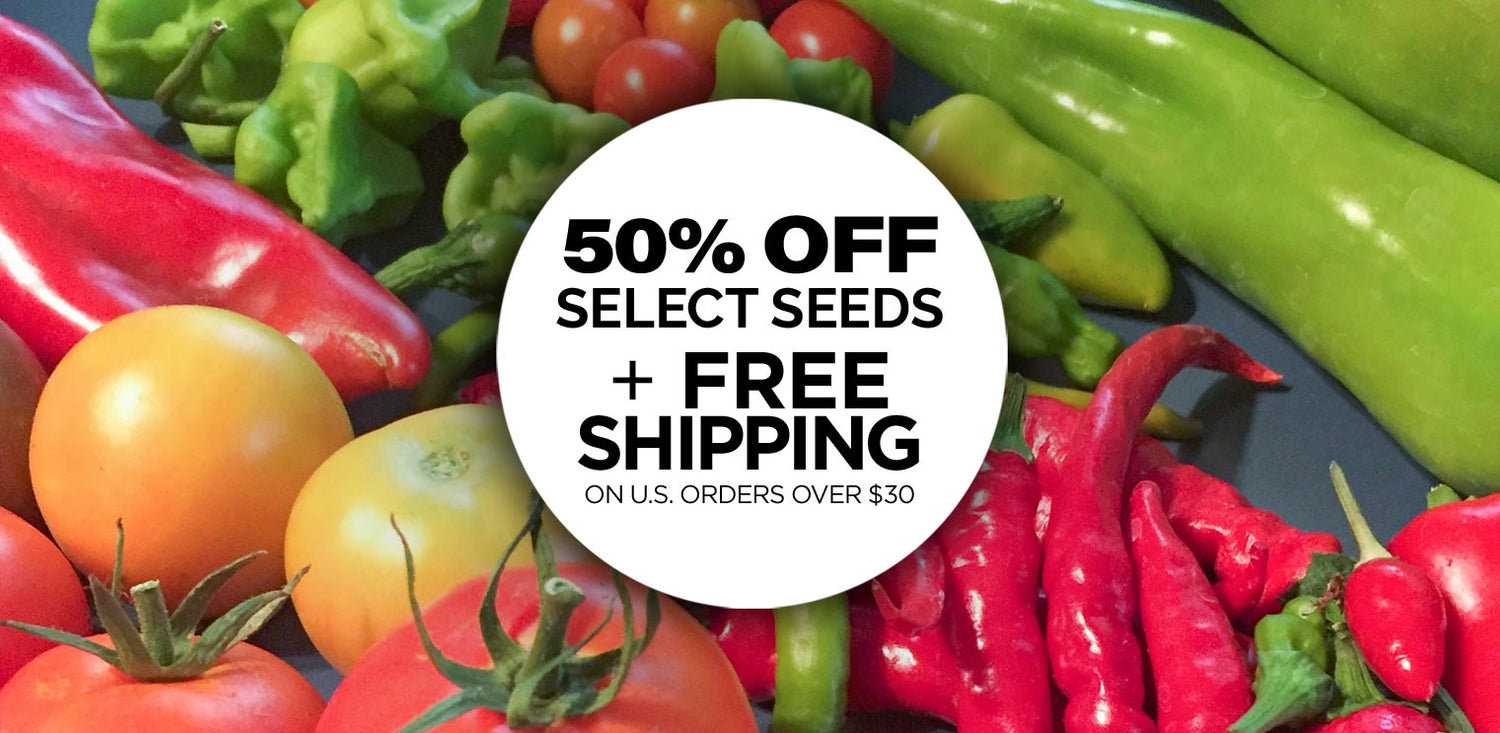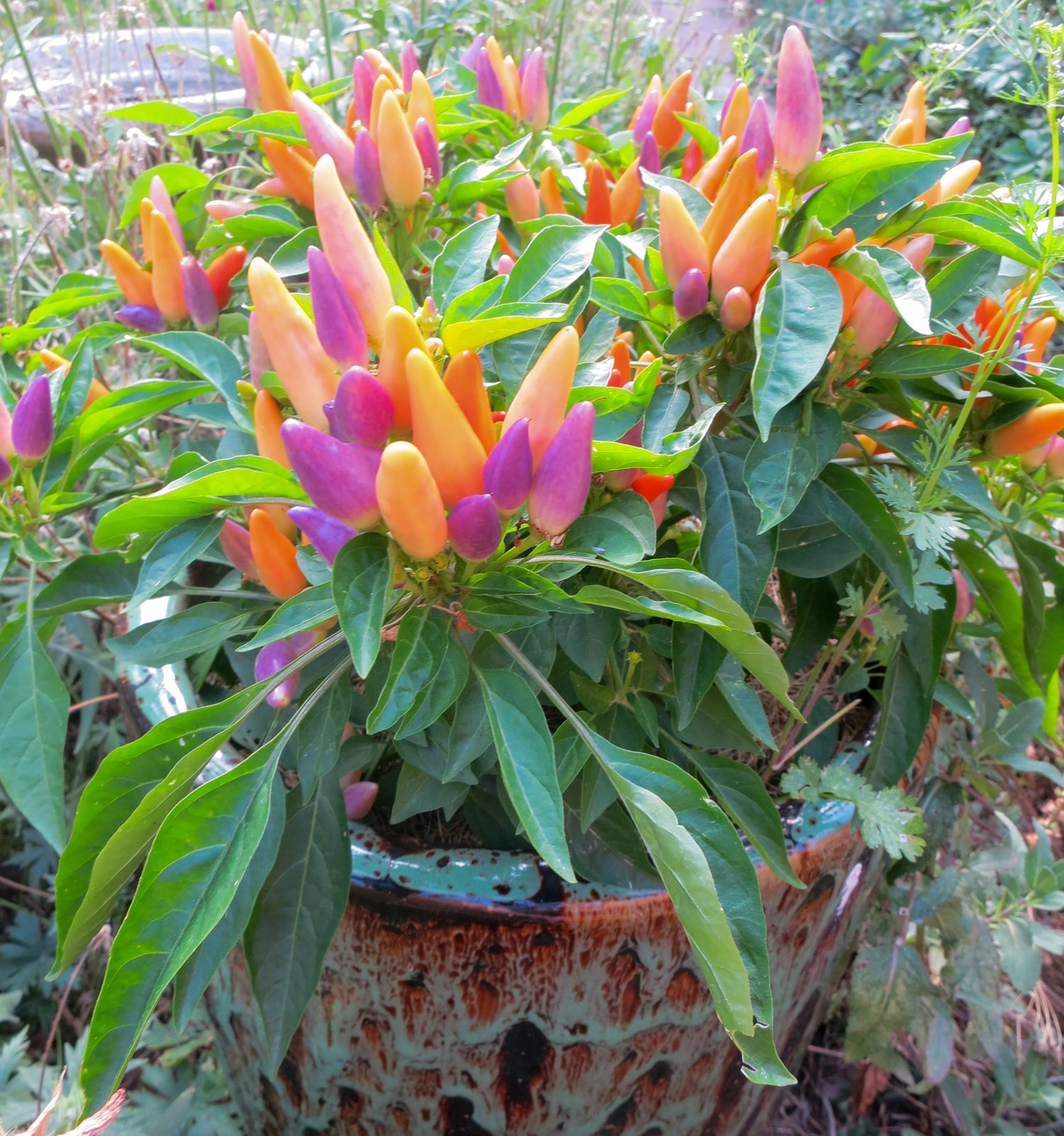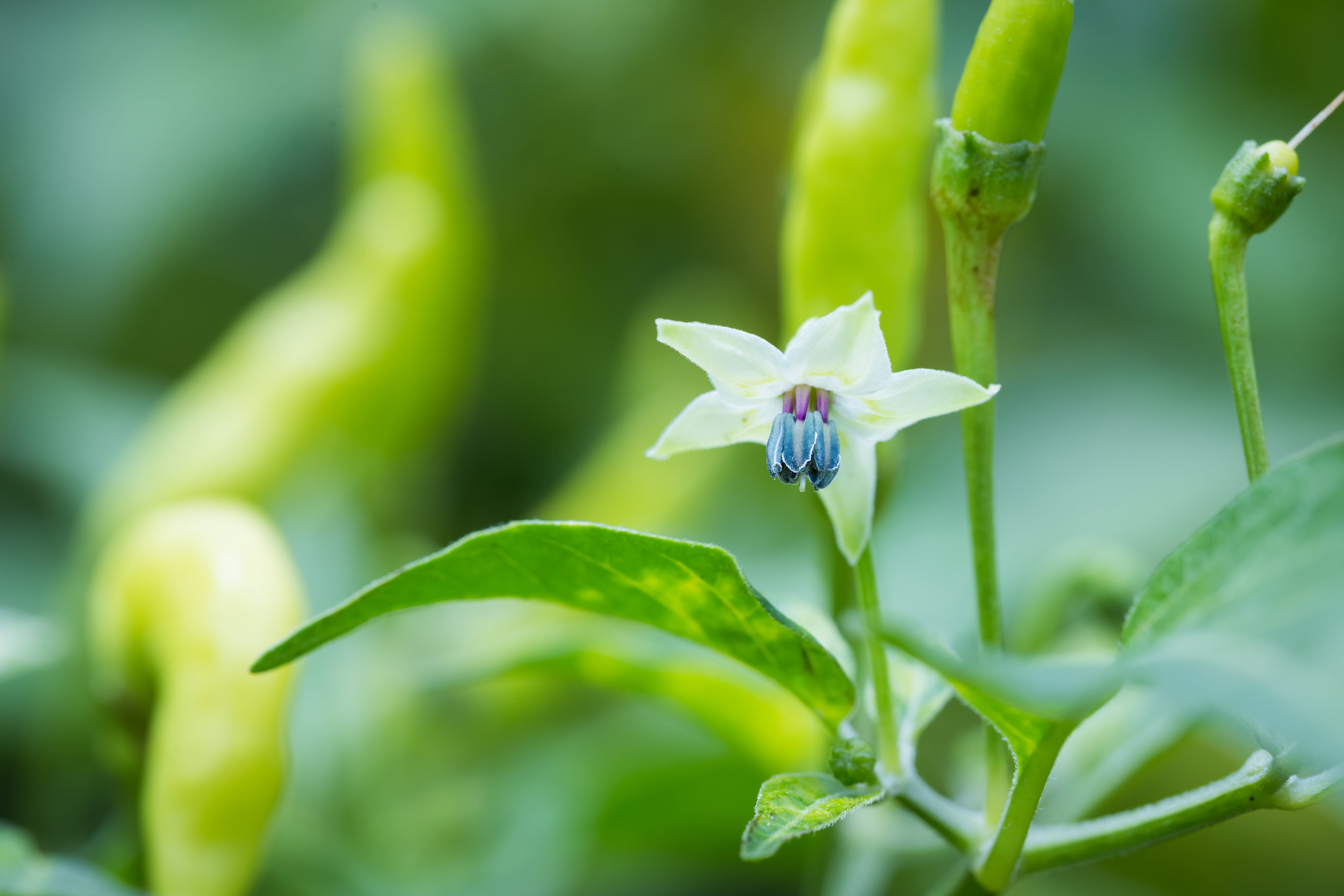
When a pepper plant has flowers but no peppers it could be because of a lack of fertilization or extreme temperatures. If it is too hot (over 95˚ F) or too cold (under 50˚ F) peppers plants will often drop their flowers. Or if the flowers are not dropping off, it could simply be that you just need to wait longer for peppers to develop.
For lack of pollination, there is an easy solution to help the pepper plant make fruit. First a little science background: Pepper plants are self-pollinating. A pepper flower already has both parts needed for fertilization, the pollen and the ovules. When the pollen gets to the ovules that is fertilization and the pepper plant will begin producing fruit.

Sometimes peppers have flowers but they drop off, or they don't seem to be turning into peppers – it could be from a variety of reasons, such as lack of pollination, or extreme temperatures (super hot 90˚F+ temperatures often cause pepper plants can drop blooms).
The pollen producing part of the pepper flower are the anthers and they sit on top of slender filaments. The ovule or egg producing part of the flower is further down inside the flower. It has a long filament that extends out of the flower with a stigma at the top. The stigma can be seen surrounded by the anthers in the picture below. When pollen gets on the stigma it travels down the long filament to the ovule and completes the fertilization process.

One thing to keep in mind regarding pepper pollination:
If it's very hot or cold, pollination may not occur. Pollination and pepper fruit set is not as likely to occur when daytime temperatures rise above 85˚ F or when nighttime temperatures drop below 60˚ F.
Growing Peppers Indoors?
If you are growing indoors or in a greenhouse, then it is going to be up to you to be the pollinator! Here's how:
Step one, be the wind.
Gently shake your pepper plant early in the morning. This allows the pollen to fall from the anther and move around inside the flower. When pollen lands on the stigma fertilization has occurred.
Step two, be the bee.
Bees are professional pollinators and so this second method is more reliable. Touch the pollen on the anthers with a cotton swab or the tip of your finger and get it covered in pollen. Rub the swab onto the stigma that is sticking out above the anthers. Moving the pollen from the anthers to stigma accomplishes fertilization. Now, with the same swab, move on to all the flowers by getting more pollen on the swab and putting it on the stigmas.
These steps can be performed in the morning throughout the flowering cycle to ensure proper fertilization.

One more thing – be patient!
Your pepper plants may be flowering but it takes time for peppers to arrive. If the entire bloom doesn't drop off but starts to shrivel, look for a tiny pod developing inside the spent blossom – it may be that you have peppers but they're just not big enough to see yet! If the temperatures are not too hot (over 90˚F) and if you're growing outdoors that allow for wind and bee pollination, your peppers are probably coming soon!
Remember, some peppers take a lot longer to mature than many other vegetables. Some of the super hots take a lot longer to flower and fruit, such as the Carolina Reaper which takes 90 days until the start of harvest, or the Trinidad Scorpion peppers take even longer at 120 days, the Ghost Pepper takes 110 days, and the Aji Pepper takes 100 days, and the Orange Habanero takes about 90 days of growing before the pods start coming. So if you grow in short season regions, faster growing peppers may be best, read below...
Faster Growing Peppers:
Impatient? Starting late? If you want peppers sooner, make sure to check out our fastest growing peppers which can harvest in as little as 57 days (Chocolate Bell) or some of our Jalapeno seeds when grown will have plants that being to harvest in just 65 days!

And one last note:
Don't over fertilize your peppers!
Too much nitrogen, especially later in the season, can cause your pepper plants to grow lush and green but not have any blossoms.
Read more about this pepper growing issue:
Why do my pepper plants have no peppers?



